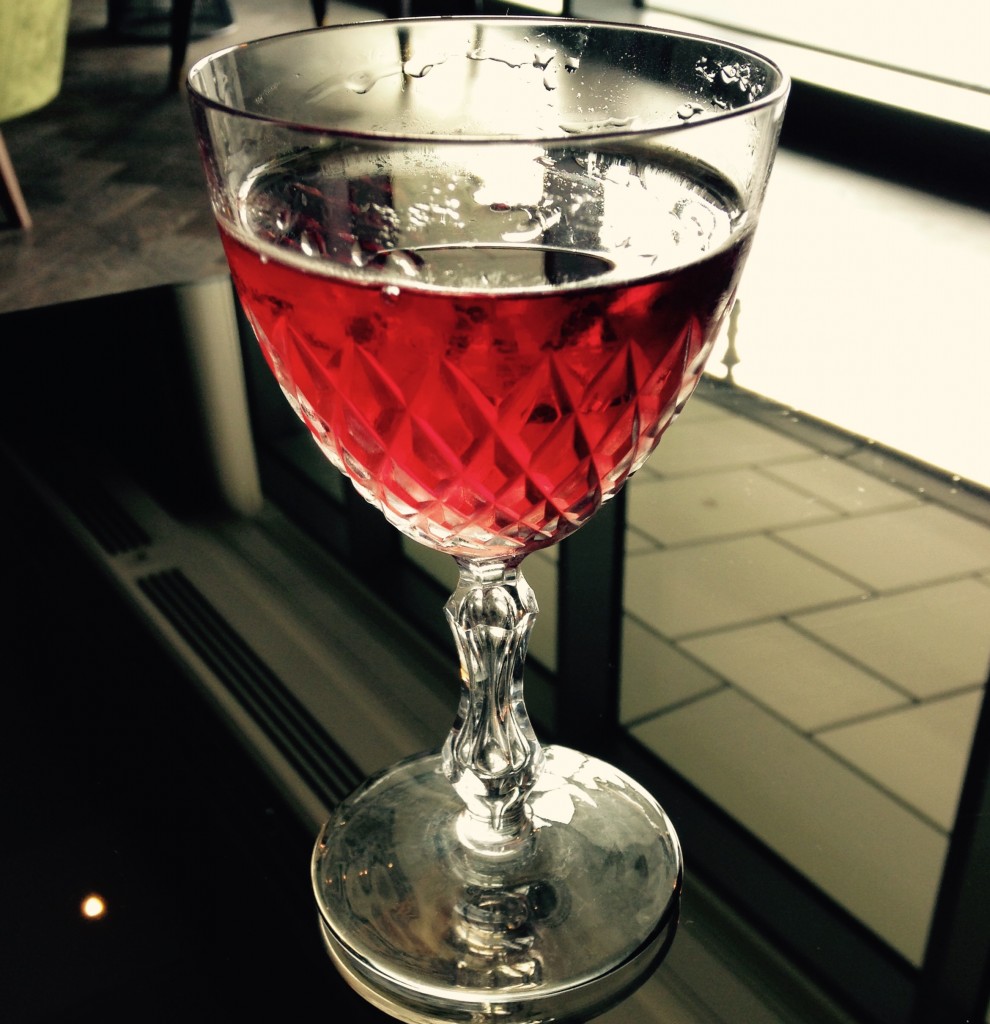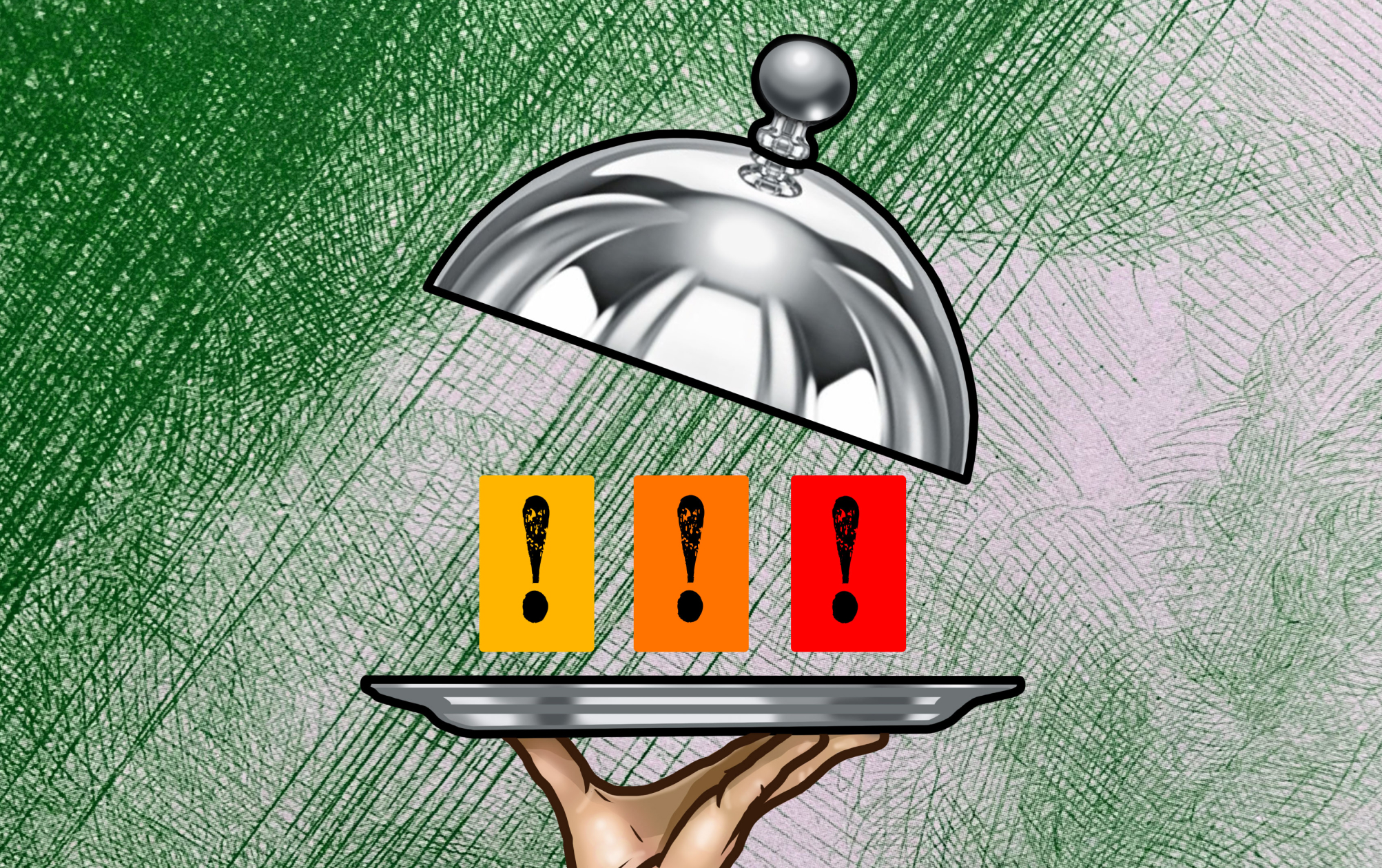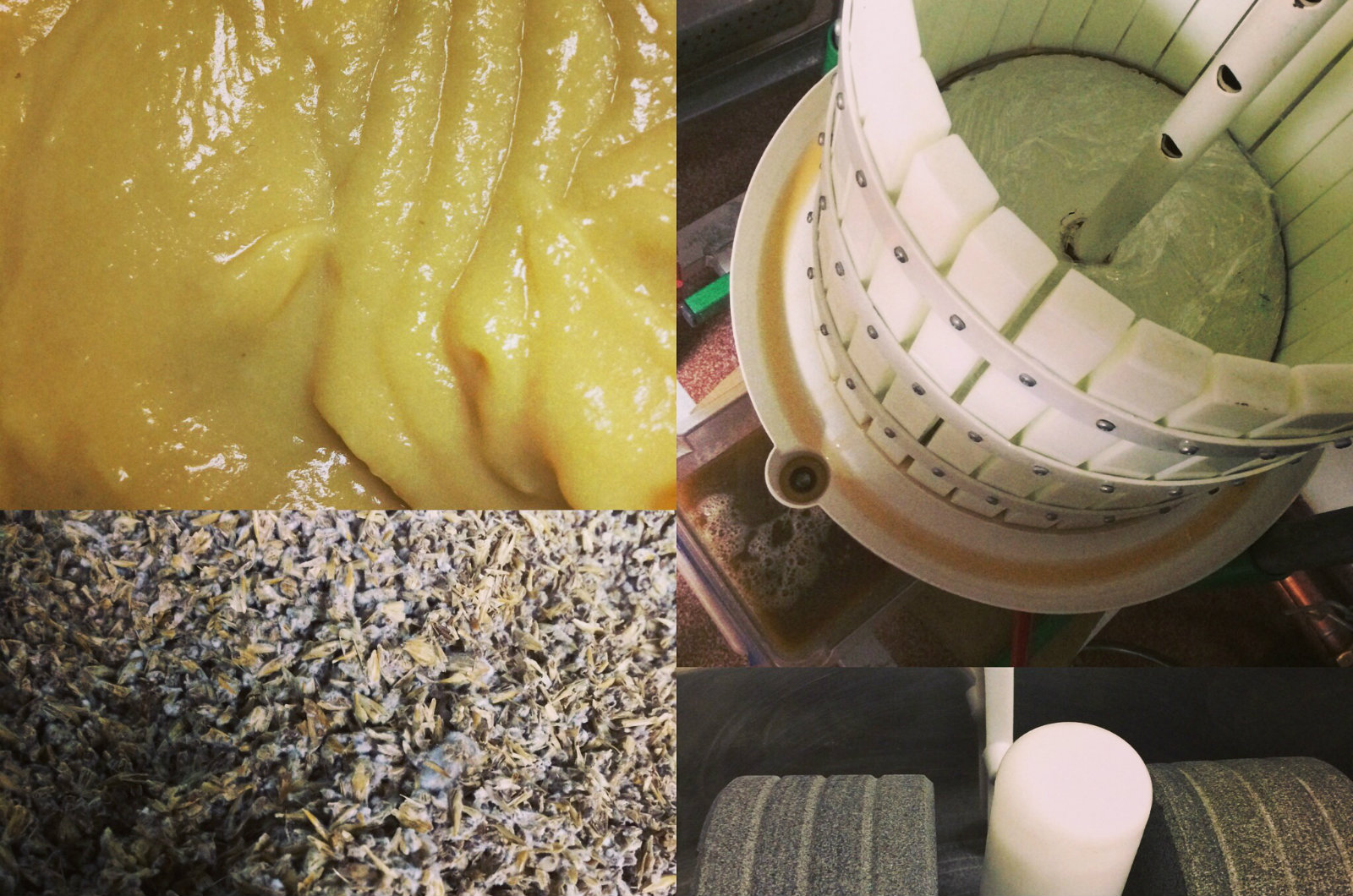Don’t Spill the Wine
The shift in perception of unused food in kitchens from waste to resource is a growing trend. We have discussed this topic before, and our research team is continuously exploring the potential of innovating food waste in our MAD lab. We are thrilled to see similar projects happening in other labs, restaurants, kitchens and even bars around the world.
Nathan O’Neill is a bartender – formerly at Mondrian London’s Dandelyan – and the creator of Un-usable Re-usable, a project in which he conducts research on repurposing food and drink waste for the bar industry. In this article, he presents his research and offers up a new cocktail based on his findings.
Research is a key component of my work. Creating new drinks means constantly being on the hunt for new ingredients, new techniques, and keeping up with what is going on in the bar industry worldwide. Somewhere along the way, inspired by global efforts in the chef community as well as other initiatives, I’ve taken a particular interest in the ongoing battle against food waste.
Part of this interest has spurred from my involvement with the Lyan Bars, which are a couple of bars focused on challenging traditional mixology and reimagining the process of creating a cocktail.
Working at a hotel, you see large amounts of waste created every day. Wine is especially tricky since it begins to oxidize from the moment we open a bottle. During my time at the Mondrian London our wine sales ranged from 9-15% on a daily basis, with most wines needing to be stored overnight when they were not being poured. In the case of wine that has become “off” I thought, we are never going to offer this at a table again. Though the kitchen is able to re-render these in sauces and condiments to a certain extent, the rest gets recorded as waste product and is poured down the drain.
Yet it struck me to wonder, is wine at this stage really past the point of no return?
At most restaurants and bars, the answer would be yes.
Un-usable, Re-usable
Driven by a mix of concern for waste and good old curiosity, I decided to take on the question myself. I started a project I call Un-usable, Re-usable, focusing directly on repurposing products used daily within the bar or kitchen that can no longer be used for their primary function.
In order to make a product work in different contexts, you have to break it down to its simplest form and gain an understanding of every detail, taste, and nose of it. Researching and absorbing all the knowledge related to what may happen in the lifetime of a product is part of the process in the creation of any new cocktail.
Which begs the question: do we, as bartenders, possess knowledge that could be used to create a new purpose for oxidized wine?
I recalled an article by food science writer Harold McGee, where he spoke of dropping copper coins and silver rods into oxidized wine to experiment with and alter flavor. He noted that his experiments ended “in failure”; a positive point for me, given the number of wine glasses I’d dropped coins in that would have me agree. But, despite having little hope for actual success, I initiated a series of experiments with wines using McGee’s research as a guide.
I started by tasting wines at different levels of oxidization, ultimately deciding after trial and error that the best period of time for this is around 5 days at room temperature. At this point, the wine starts to become quite acidic. The aroma begins to sour, and a slight tannic note remains – though probably more from the oxidization – whilst structure is upheld.
The wine I set forward with was a 2012 Tomas Cusine Vilosell. It has a grape base of Tempranillo and Syrah and a short aging period of around 9 months in French oak wood. It’s a very smooth wine with a natural pungency, light tannins, underlying notes of deep dark fruits, and a touch of smoke. The balance of this wine weathered the oxidizing period with age, smoke and light tannins carrying throughout – which is why I chose it.
When researching the re-rendering of wine I considered one aspect in particular, namely, how is wine served? The use of a decanter means that the wine is poured slowly, allowing it to “breathe” with the increased presence of oxygen. I experimented with different manners of decanting the wine, including using a bartending technique called ‘throwing’ that involves passing liquid from one hand to the other inside a tin at arm’s length.
Unfortunately, it didn’t do very much apart from covering me in splashes of red wine.
Mixing it Up
My next move was to turn to the Thermomix, a high-tech multi-purpose kitchen appliance, which does exactly what the name implies: it heats and mixes. Applying different timings and speed levels – but no heat – I explored whether contact with metal blades at speed and a higher rate of oxygen would have any effect on the wine.
The experiments with timing provided the most interesting results:
At 5 minutes of aeration, the wine had a lot of acidity, and flavors spiked at different points.
At around 7 minutes, I found that the wine became a lot lighter. The level of acidity seemed to subside slightly, but the palate became very dry on the finish.
Around 9 minutes in, the wine seemed to begin to warm up slightly, which changed it significantly. It became super dry and tannic, resulting in a loss of depth in the wine.
I chose to work with the qualities of the 7-minute oxidization with zero heat and no sugar to balance. I then spun it further for another good 2 minutes on a very low setting with no heat, to slowly dissolve the sugar. This resulted in lots of depth, great structure, and a feel that coated the whole palate. It had an almost light freshness to the start, and a finish that came with slight smoke and tannic notes.
The use of the Thermomix clearly altered the aroma and taste profile of the wine, which now offered something very different in terms of structure. It was nowhere near the standard to be poured at a table, but it made me think. Could we look at wine in this state as an ingredient?
My mind instantly switched to consider the ways this wine could be developed to enhance the flavor of a cocktail.
With a body that held up, I knew the wine would be perfectly paired with Knob Creek Bourbon Whiskey, which would add notes of vanillin, toasted nuts and oak. While considering the cocktail, I thought about other potential waste, and a classic situation stood out. When juicing lemons, they are usually squeezed and the rind is thrown out. But why not just remove the skin – which is incredibly bitter – and juice the whole lemon instead? What added qualities might the pith and seeds provide?
It was these three ingredients I settled on to create something entirely new.
The Londinium Sour
Ingredients:
- Lemon
- Knob Creek Bourbon Whiskey
- 2012 Tomas Cusine Vilosell oxidized for five days at room temperature
When preparing this drink, make sure to show the oxidized wine as it is poured from the bottle. Walk the guest through every step, letting them have a taste at different stages that you are working on. What is most important, however, is that the finished product is precisely the way you’ve described it.
1. Start off de-skinning lemons to run them through a centrifugal juicer whole.
- The bitterness of the pith doesn’t only give the drink a different taste, but also adds a heavier feel to match the wine.
2. The wine is then added to a Thermomix, where it is set to spin with no heat. Once that has been completed, weigh out the wine, and balance it using sugar, then cool.
- The addition of sugar allows the structure of the wine to come through in a different way, adding richness and texture whilst finishing with a tannic note.
3. Once the ingredients are ready, we add in 1 shot of each, and 2 shots of Bourbon Whiskey, which we then shake hard over cubed ice and fine strain into a coupette glass.
Guests are often surprised with the difference in flavor between the oxidized wine and the final product, particularly with it having kept the stability of its structure. What’s most impressive is the way the wine almost takes on a dessert wine feel in the mouth, but offers a completely different finish while still tasting very young prior to being added to the cocktail.
The result is a bold and complex drink with a long lasting finish, granting the wine a new lease of life.
Waste Not
Surprisingly, my experiments with oxidized wine resulted in creating something I would gladly serve. Since, my eye has turned to several other possibilities for repurposing waste in my continuous effort to explore new ingredients. Take coffee grounds, for example. A source of great amounts of waste already known to hold great potential for reuse, such as being used as a medium for growing mushrooms and being an ingredient in crackers. Could they be repurposed for cocktails as well?
With the right knowledge and research we have the tools to look at the waste – the resources – around us and find endless possibility for reinvention and innovation. We could be discovering flavors never tasted before that may just be the best thing we have ever tasted.






